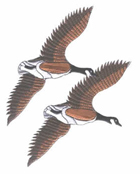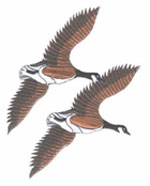The first Europeans to arrive in Surinam were the Dutch around 1630, who immediately started trading with the locals, as they had done in other parts of South America. However it was the English who were the first to settle the area a few years later, when a Captain Marshall started a colony, with the intentions of cultivated tobacco, however the venture failed financially.
In 1650 Lord Willoughby who at the time was the Governor of Barbados financed a fleet led by Major Anthony Rowse to settle in Surinam and set up a plantation in his name. Two years later Lord Willoughby sailed to Suriname to help fortify the settlement and set up a trading post. 'Willoughbyland' as it was named consisted of around 30.000 acres and a fort. In 1663 most of the work on the 50 plantations was undertaken by native Indians and several thousand African slaves, along with about 1,000 Europeans.
On the 26th February 1667 the settlement was invaded by seven Dutch ships led by Abraham Crijnssen. It was captured the next day after a three hour battle and renamed Fort Zeelandia. On 31 July 1667 the English and Dutch signed the ‘Treaty of Breda’ in which for the time being the status quo was respected. The Dutch were allowed to occupy Surinam alongside the British although the country was renamed Dutch Guyana. A long period of time followed when Surinam went through several changes of ownership between the British and the Dutch.
Surinam was occupied by the British in 1799, after Holand were incorporated by France, and was returned to the Dutch in 1816, after the defeat of Napoleon. The Dutch went on to abolish slavery in 1863. Something the British had already undertaken during their short rule. However the slaves were not released until 1873. Until that date they conducted obligatory but paid work on the plantations. In the meantime, many more workers had been imported from the Dutch East Indies, mostly Chinese inhabitants of that colony. After 1873, many Hindu laborers where imported from India. This emigration was ended by Mohandas Gandhi in 1916. After that date, many labourers were again imported from the Dutch East Indies, especially from Java.
In the 20th century, the natural resources of Surinam, rubber, gold and bauxite were exploited. The US Company Alcoa had a claim on a large area in Surinam where bauxite, from which aluminum can be made, was found. Given that the peace treaties with the Maroon people granted them title to the lands, there have been international court cases that negated the right of the Surinam government to grant these.
In 1954, Surinam gained self-government, with the Dutch retaining control of defense and foreign affairs.
In 1973, the local government, led by the NPK (a largely Creole party) started negotiations with the Dutch government about independence, which was granted at November 25, 1975. The Dutch instituted an aid program worth US$1.5 billion to last till 1985. The first President of the country was Johan Ferrier, with Henck Arron (leader of the Surinam National Party) as Prime Minister. During that time roughly a third of the population immigrated to the Netherlands, fearing that the new country would not be able to survive.
In 1980, the government of Henck Arron was overthrown in a military coup led by Sergeant-Major Desi Bouterse. President Ferrier refused to recognise the new government, appointing Henk Chin A Sen (of the Nationalist Republican Party). Another coup followed five months later, with the army replacing Ferrier with Chin A Sen. These developments were largely welcomed by a population that expected the new army-installed government to put an end to corruption and improve the standard of living. This was despite the fact that the new regime banned opposition parties and became increasingly dictatorial. The Dutch initially accepted the new government, however, relations between Surinam and the Netherlands collapsed when 15 members of the political opposition were killed by the army on December 8, 1982, in Fort Zeelandia. This event is also known as the ‘December killings’. The military, then under the leadership of Desi Bouterse rounded up several prominent citizens who were accused of plotting against the government. They were allegedly tortured and killed during the night. The Dutch and Americans quickly suspended all foreign aid to Surinam after this event as a protest. Leading to Bouterse looking towards countries such as Grenada, Nicaragua, Cuba and Libya for help.
In 1985, the ban on opposition parties was lifted, and work began on devising a new constitution. The following year saw the start of an anti-government rebellion of the Maroons in the interior, calling themselves the Jungle Commando and led by Ronnie Brunswijk, a former Bouterse body guard. Ronnie initiated a revolt by attacking a military post at Stolkertsijver. The Bouterse government violently tried to suppress the insurgency by burning villages and other similar means. Forcing many Maroons to flee to neighbouring French Guiana.
By September 1986 Brunswijk and his Surinam National Liberation Army (SNLA) was being assisted by at least three British Mercenaries. Carl Finch, former French Foreign Legionnaire John Richards and a third who at the moment is unknown. Although Anthony Rogers claims in his book ‘Someone Else’s War’, that he parted company very early, after discovering the severed head of a pro-government captive being boiled in the Britons drinking water. While in March 1987 Anthony also remarks that two more English Mercenaries arrived in Surinam, namely Charlie Mosley and John Love.
Terry Aspinall
Other articles of interest
To learn more of this conflict may I recommend you read Anthony Rogers book.



